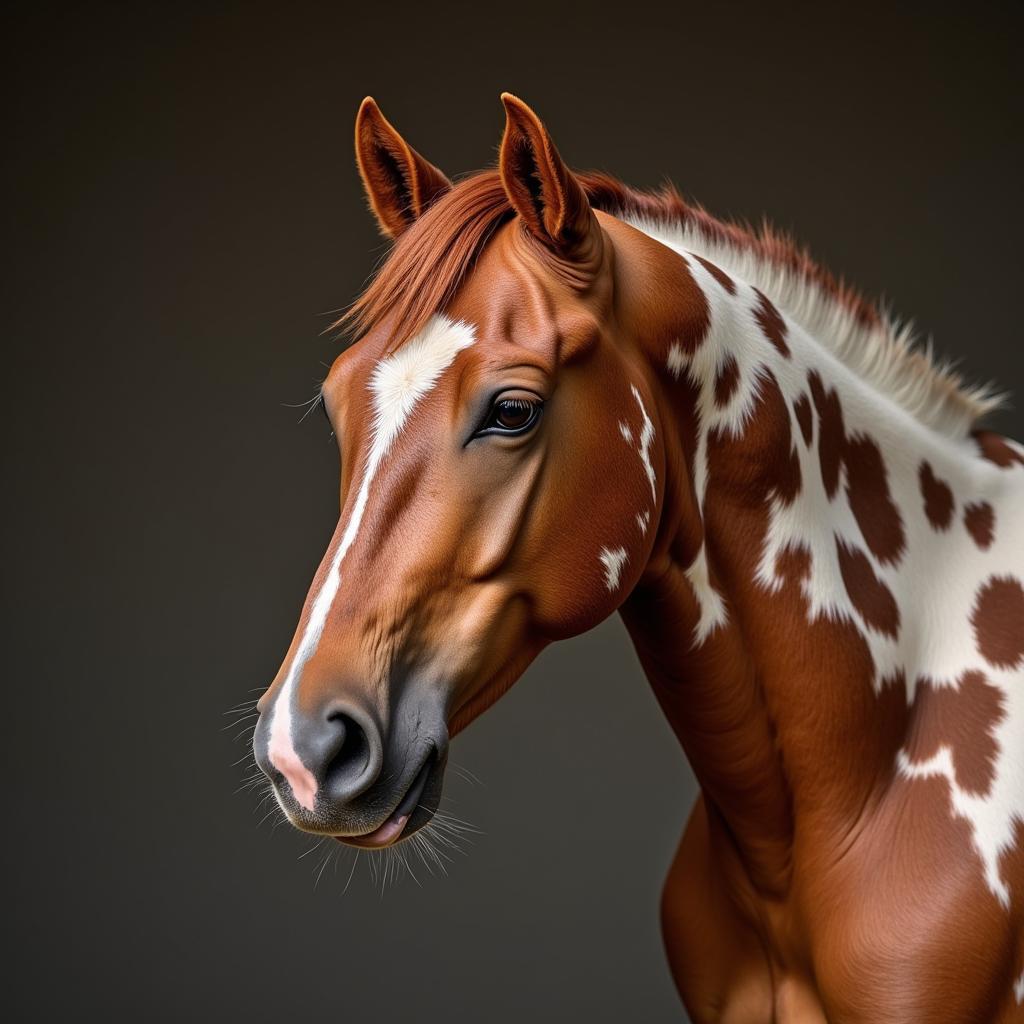The term “Caramel Chip Horse” might sound good enough to eat, but it actually refers to a striking and sought-after coat pattern found in horses. While not an officially recognized breed standard, this delightful coloration captures attention with its unique blend of colors and markings, often drawing comparisons to the sweet treat it’s named after.
 Caramel Chip Horse Coat
Caramel Chip Horse Coat
What Defines a Caramel Chip Horse?
The charm of the “caramel chip horse” lies in its distinctive coat pattern characterized by:
- Base Coat: Typically, a rich, dark base coat such as bay, black, or chestnut forms the canvas for this unique pattern.
- Light Spots: Scattered across the base coat are lighter spots, often in shades of gold, tan, or light brown, resembling caramel chips sprinkled on a chocolate treat. These spots can range in size and shape, adding to the individuality of each horse.
- Distribution: The “caramel chip” effect is most prominent on the horse’s body, particularly the barrel, flanks, and neck.
Genetics Behind the Caramel Chip Look
While “caramel chip” isn’t a recognized color breed standard, the genetic mechanisms behind the pattern likely involve a complex interplay of genes influencing coat color and markings in horses. Factors at play could include:
- Pangaré Gene: This gene can lighten the coat color on the muzzle, flanks, and underbelly, potentially contributing to the lighter areas in the “caramel chip” pattern.
- Sooty Factor: This genetic modifier can cause the darkening of coat colors, potentially intensifying the contrast between the base coat and lighter spots.
- Other Modifiers: Numerous other genetic modifiers can impact coat color and pattern in horses, and their combined effects likely contribute to the unique “caramel chip” appearance.
Beyond the Coat: Temperament and Suitability
It’s important to remember that coat color doesn’t dictate a horse’s personality or aptitude. “Caramel chip” horses, like any other coat pattern, can exhibit a wide range of temperaments and abilities influenced by breeding, upbringing, and training.
When considering a horse with a specific coat pattern, it’s crucial to prioritize temperament, conformation, and training over aesthetics.
Finding Your Own “Caramel Chip”
While “caramel chip” horses are relatively uncommon, you might stumble upon one while searching for your next equine partner. Don’t limit your search solely based on coat color. Focus on finding a horse that aligns with your riding goals, experience level, and personality.
 Caramel Chip Horse Being Ridden
Caramel Chip Horse Being Ridden
Conclusion
The “caramel chip horse” captivates with its unique and visually appealing coat pattern. While not a recognized breed, this charming coloration adds a touch of sweetness to the equine world. Remember, when choosing your equine partner, prioritize temperament, conformation, and suitability over aesthetics alone.
FAQs
1. Is a “caramel chip horse” a specific breed?
No, “caramel chip horse” refers to a coat pattern rather than a specific breed.
2. What breeds are most likely to exhibit the “caramel chip” pattern?
While any breed can potentially display this pattern, it’s not particularly associated with any specific breed.
3. Do “caramel chip” horses have specific health concerns?
Coat color doesn’t generally dictate specific health concerns. However, it’s essential to inquire about a horse’s overall health and lineage regardless of coat pattern.
4. Are “caramel chip” horses rare?
This coat pattern is considered relatively uncommon, making it a unique and eye-catching find.
Do you need assistance in finding your perfect equine partner? Contact us at Phone Number: 0772127271, Email: [email protected] or visit us at QGM2+WX2, Vị Trung, Vị Thuỷ, Hậu Giang, Việt Nam. Our team is available 24/7 to assist you.